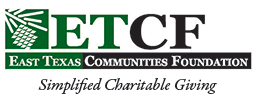We are approaching three years this spring since the COVID-19 pandemic. When the pandemic hit, many plans for growth and expansion were put on hold. According to economist Ray Perryman in his annual economic outlook presented in Tyler last week, Texas businesses recovered faster than the nation as a whole and East Texas did a little better than the state. Unemployment is currently very low and Tyler continues to grow. As a result of this steady growth, projects that were put on hold are beginning to resurface.
Nonprofits have been more reluctant than most businesses since 2020, to raise the issue of capital projects, not wanting to start fundraising campaigns amid the uncertainty. Necessity eventually requires action, however, and several nonprofits have completed or started capital projects with several others making moves toward inevitable capital campaigns.
Fundraisers are trained to consider three types of gifts, based on the interests and capabilities of donors. The three types of gifts are annual gifts, major gifts, and planned gifts. I thought it might be helpful to consider each type of gift from the donor’s perspective and consider how they might affect your charitable giving this year.
The first type of gift is a gift to support the annual operations of a nonprofit organization. Nonprofits are critically dependent on annual support to maintain their facility, staff, and services. Nonprofits employ a variety of methods to raise annual support, including direct mail, email, and annual events. As a donor, you may prefer to simply respond to an annual appeal letter. This time-tested approach is efficient and inexpensive and works for many donors. Some donors prefer gathering for an event to engage with others, introduce friends to the organization, hear about the organization’s programs and make an annual gift. Events such as galas, luncheons, and golf tournaments have very specific fundraising and friend-raising objectives, including a primary objective to raise annual support. Technology is making it easier to raise annual support, and email appeals and social media-driven events such as East Texas Giving Day are meant to leverage technology to communicate needs and receive annual gifts.
The second type of gift is a major gift, which is usually targeted to a specific project such as a new program or new facility/expansion. Capital campaigns are the most common method used to raise major gifts for such projects and can involve months of planning and preparation. Some of the planning involved in capital campaigns is focused on maintaining annual support at a time when donors are being asked to make larger gifts or multi-year commitments to the campaign. New facilities and programs require ongoing annual support once they are completed, and some capital campaigns include raising funds to endow future operations. If one of your favorite charities is planning a capital campaign, you should thoughtfully consider when and how you want to support the campaign while maintaining your annual support.
Finally, the third type of giving is planned giving. Though you may give a gift of a unique asset such as a piece of real estate, mineral interests, or ownership interest in a business, that requires a higher degree of planning during your lifetime, most people use the term “planned gifts” to describe gifts they plan to leave to charity as part of their estate. Planned gifts are the ultimate expression of the value you place on the work of your favorite nonprofits. Though you may provide faithful annual support and occasional major gifts to many different charities during your lifetime, planned gifts are usually reserved for a handful of charities that are most important to you. Organizations that you might consider for planned gifts are those for which you have served as a volunteer or board member or those whose missions align well with your personal values. Endowments are a great consideration for planned gifts, creating funds that will provide annual support for your favorite charities. An estate gift that is twenty times the size of your annual gift can create an endowment that will sustain your level of annual support forever. Another way to think about the three tiers of giving is: For Now, For This, and Forever. As you make your plans for charitable giving in 2023, consider the gifts you want to make “For Now” to provide vital annual support, “For This” to provide support for capital campaigns and special projects, and “Forever” to align the charitable gifts in your estate with your lifetime values and interests. Our staff at ETCF would welcome the opportunity to discuss your charitable giving options for 2023 and beyond. Planning “For This”, “For Now” and “Forever” may be your next best opportunity to Give Well.


Recent Comments